There is big interest in livestock underpasses. In Cork and Tipperary alone, almost 50 planning applications for livestock underpasses have been received since January 2020.
Those involved in supplying culverts are reporting record sales and a backlog in jobs.
It is easy to see why – dairy expansion has meant that farms have got bigger and there are more roads to cross in order to access cow grazing ground. 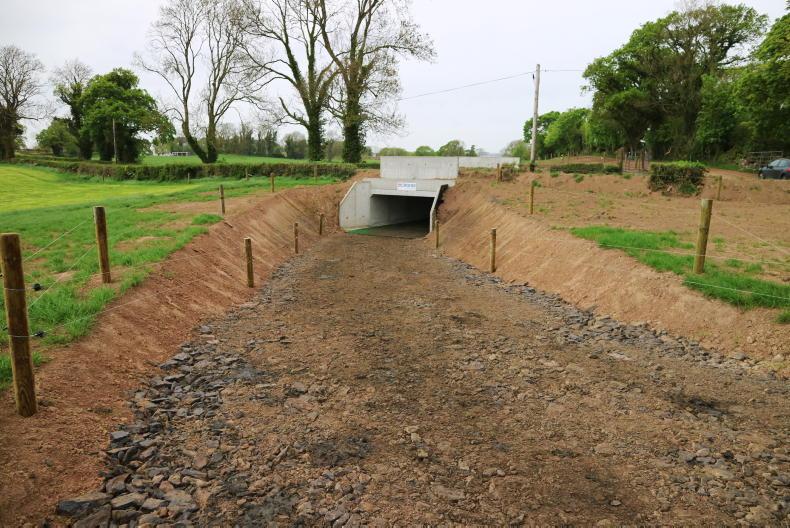
Installing underpasses makes this task seamless. In other cases, underpasses are being installed in roads that cows traditionally walked across, even where no expansion has taken place.
Taking cows off the road improves road safety and greatly increases farm efficiency. Where robots are being installed, an underpass is more or less essential for voluntary milking.
Location
The location of the underpass is fundamentally important. There is a tendency to presume that the best place to site it is where the cows are currently crossing the road, but this may not be the case.
For one thing, will an underpass at that location best serve the current and future needs of the farm? Does it provide the shortest route from field to milking parlour or will cows be going on a circuitous route?
It is worth exploring some “what-if” scenarios if extra land is taken on and the location of the underpass relative to that land. A different location might tie the whole farm in better.
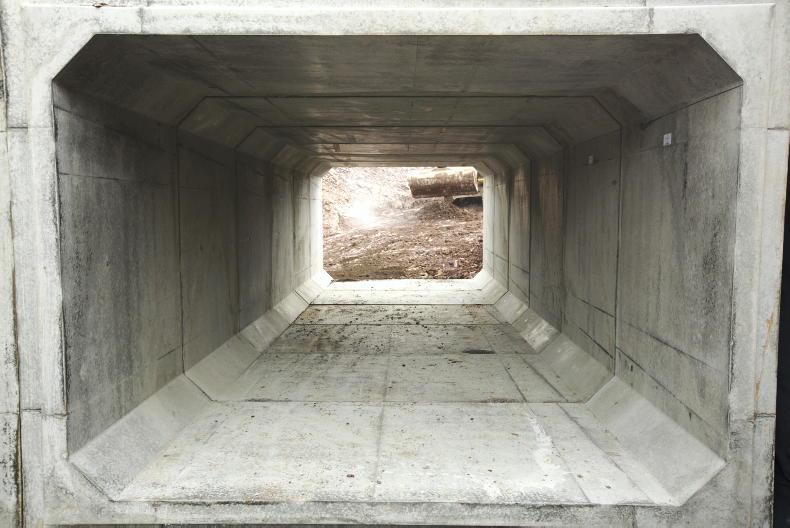
New underpass on the farm of Tom & Simon Browne, Greenhills Farm, Killeagh, Co Cork. \ Donal O'Leary
It is also important to consider the suitability of that location for the physical underpass as it can have a big impact on both construction and running costs and the long-term success of the project.
The main thing to consider here is the proximity of the water table to field level. The base of the underpass is going to be at least 3m below the surface of the road and the surface of the road could be above or below field level.
If the water table is within 3m of the road surface, you can expect water to be present in the underpass, unless extra and costly measures are taken to prevent water from seeping in.
This usually means having to fully seal the culverts and construct waterproof walls and floors on the ramps. Rainfall entering the culvert would need to be stored in the same way as soiled water.
Rock is another consideration but is generally something that can be overcome easily enough, although it can add significant cost to construction.
However, water is a bigger issue than rock. Digging test pits is a useful way to assess the site characteristics before planning permission is sought. Other issues include water/gas mains and fibre optic cables under the road.
Planning
While one would expect that local authorities would bend over backwards to assist farmers in the construction of livestock underpasses, that is not always the case and many farmers report difficulty with securing planning permission.
It is important to remember than an underpass is a private development on the public realm.

On one hand, taking cows off the road improves road safety but on the other hand if the underpass isn’t constructed to standard it could cause a road safety issue.
Hence, local authorities have a duty of care to ensure that the construction is carried out correctly, using proper techniques and the right materials.
Different councils have different requirements and even within councils planning officers apply different conditions to a planning application, all of which can add significant costs to the farmer and cause frustration.
Transport Infrastructure Ireland (TII) standards are increasingly being used by local authorities when it comes to underpasses. Planning permission may be granted subject to certain conditions being met.
Some of these TII conditions involve independent engineer certification and reports, which can add significant cost to the project (€10,000 to €15,000 in some cases).
It would be worthwhile arranging a pre-planning meeting with council engineers to get a handle on their requirements before applying for planning permission.
Asking a local representative to engage with council officials on your behalf is also worthwhile as it can help to speed up the process.
Typically, a planning application for an underpass will cost approximately €2,500 to €3,500 plus VAT and should be carried out by someone with experience of the planning system and underpasses. There are a number of engineering firms that specialise in this area.
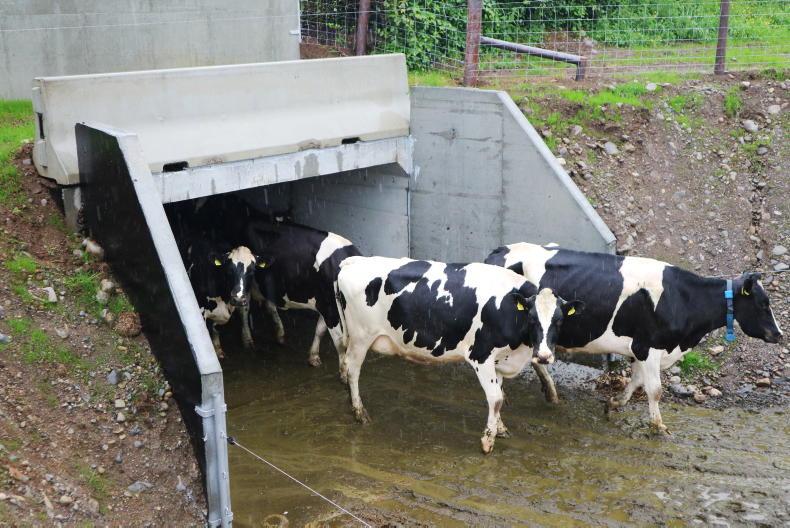
A Laois farmer installed an underpass and is delighted with the outcome.
The planning authority will often come back looking for further information. This could involve specific queries in relation to the plans or site. They can often request a hydrogeological report on the site which involves a specialist engineer visiting the site and assessing the groundwater levels and geology. Quotations for this work range from €750 plus VAT to €3,000 plus VAT.
Planning takes time and farmers should factor in a lead time of 12 to 18 months between engaging with an engineer and securing planning permission.
Dimensions
Prior to submitting a planning application, the dimensions of the underpass will need to be decided. Generally speaking, larger herds need a wider underpass whereas smaller herds can get away with narrower widths.
The exception to this is when the underpass is situated very close to the yard. In such cases the underpass should be as wide as possible as cows tend to slow down and bunch together as they get closer to the yard.
A narrow underpass here would reduce cow flow further and lead to a bottleneck. Those with robots can get away with narrow widths as cows are usually walking in single file.
The three most common sizes are internal widths of 3m, 3.6m and 4.6m.
It is important to compare underpass dimensions on internal widths and not external dimensions.
As a general rule of thumb, 3m is sufficient for herds of up to 150 cows, 3.6m for herds up to 300 cows and 4.6m and more for herds of 300 cows or more. Internal heights of 2.1m are more or less standard.
In older underpasses the culverts were often the bare width of the road but this is no longer acceptable
How long the underpass should be will depend on the width of the road being crossed and if the road is straight or at a bend. An experienced engineer will know what the council requirements are.
In older underpasses the culverts were often the bare width of the road but this is no longer acceptable and councils are now insisting on the culverts being at least 1.5m to 2m wider than the road.
This improves safety if a person or vehicle comes off the road and it also gives the council options if the road is ever to be widened.
The slope of the ramps is a key consideration. This should ideally be 1:14 and certainly no greater than 1:10.
Steep slopes are harder for cows to walk on. They defecate more and this makes the slope slippery, which makes it even harder to walk on. Gently sloping ramps cost more to construct and use up more land area but are key to a successful project.
Where steeper slopes cannot be avoided, consider building concrete steps. Lameness expert Neil Chesterton recommends steps to be 100mm high and 800cm long.
Costs
There are a number of companies that specialise in underpass construction. These are usually concrete manufacturers who outsource planning and plant hire to third parties but oversee the construction by their own in-house team.
These will quote for the complete job.
There are two things to keep in mind when dealing with these companies. Firstly, they usually quote for the supply of concrete and construction of the underpass alone and not the cost of constructing the ramps.
The other thing to keep in mind is the number of culverts in the initial quotation
There could be two or three days’ work with track machines and dumpers constructing the ramps so this needs to be factored in. By not including the cost of the ramps, the cost of the project seems lower.
The other thing to keep in mind is the number of culverts in the initial quotation. It could be the case that the minimum number of culverts is quoted for, when in reality extra culverts will be required to satisfy the local authority.
Again, this makes the cost of the job seem lower.
Another option is to go direct labour and hire an engineer to do planning and oversee the project, hire a plant hire company to do the groundwork and purchase the concrete directly off a manufacturer.
If going down this route, make sure to have all costs identified and agreed in advance so no task is on a per-hour basis, with the likely exception of rock breaking. The time involved in applying for road opening and closing licences, paying bonds to the council, etc, cannot be underestimated.
In my experience, most cattle underpasses will cost in the region of €40,000 to €60,000 plus VAT by the time they are fully finished. I have heard of much lower prices being quoted but would question if all costs have been included.
There is big interest in livestock underpasses. In Cork and Tipperary alone, almost 50 planning applications for livestock underpasses have been received since January 2020.
Those involved in supplying culverts are reporting record sales and a backlog in jobs.
It is easy to see why – dairy expansion has meant that farms have got bigger and there are more roads to cross in order to access cow grazing ground. 
Installing underpasses makes this task seamless. In other cases, underpasses are being installed in roads that cows traditionally walked across, even where no expansion has taken place.
Taking cows off the road improves road safety and greatly increases farm efficiency. Where robots are being installed, an underpass is more or less essential for voluntary milking.
Location
The location of the underpass is fundamentally important. There is a tendency to presume that the best place to site it is where the cows are currently crossing the road, but this may not be the case.
For one thing, will an underpass at that location best serve the current and future needs of the farm? Does it provide the shortest route from field to milking parlour or will cows be going on a circuitous route?
It is worth exploring some “what-if” scenarios if extra land is taken on and the location of the underpass relative to that land. A different location might tie the whole farm in better.

New underpass on the farm of Tom & Simon Browne, Greenhills Farm, Killeagh, Co Cork. \ Donal O'Leary
It is also important to consider the suitability of that location for the physical underpass as it can have a big impact on both construction and running costs and the long-term success of the project.
The main thing to consider here is the proximity of the water table to field level. The base of the underpass is going to be at least 3m below the surface of the road and the surface of the road could be above or below field level.
If the water table is within 3m of the road surface, you can expect water to be present in the underpass, unless extra and costly measures are taken to prevent water from seeping in.
This usually means having to fully seal the culverts and construct waterproof walls and floors on the ramps. Rainfall entering the culvert would need to be stored in the same way as soiled water.
Rock is another consideration but is generally something that can be overcome easily enough, although it can add significant cost to construction.
However, water is a bigger issue than rock. Digging test pits is a useful way to assess the site characteristics before planning permission is sought. Other issues include water/gas mains and fibre optic cables under the road.
Planning
While one would expect that local authorities would bend over backwards to assist farmers in the construction of livestock underpasses, that is not always the case and many farmers report difficulty with securing planning permission.
It is important to remember than an underpass is a private development on the public realm.

On one hand, taking cows off the road improves road safety but on the other hand if the underpass isn’t constructed to standard it could cause a road safety issue.
Hence, local authorities have a duty of care to ensure that the construction is carried out correctly, using proper techniques and the right materials.
Different councils have different requirements and even within councils planning officers apply different conditions to a planning application, all of which can add significant costs to the farmer and cause frustration.
Transport Infrastructure Ireland (TII) standards are increasingly being used by local authorities when it comes to underpasses. Planning permission may be granted subject to certain conditions being met.
Some of these TII conditions involve independent engineer certification and reports, which can add significant cost to the project (€10,000 to €15,000 in some cases).
It would be worthwhile arranging a pre-planning meeting with council engineers to get a handle on their requirements before applying for planning permission.
Asking a local representative to engage with council officials on your behalf is also worthwhile as it can help to speed up the process.
Typically, a planning application for an underpass will cost approximately €2,500 to €3,500 plus VAT and should be carried out by someone with experience of the planning system and underpasses. There are a number of engineering firms that specialise in this area.

A Laois farmer installed an underpass and is delighted with the outcome.
The planning authority will often come back looking for further information. This could involve specific queries in relation to the plans or site. They can often request a hydrogeological report on the site which involves a specialist engineer visiting the site and assessing the groundwater levels and geology. Quotations for this work range from €750 plus VAT to €3,000 plus VAT.
Planning takes time and farmers should factor in a lead time of 12 to 18 months between engaging with an engineer and securing planning permission.
Dimensions
Prior to submitting a planning application, the dimensions of the underpass will need to be decided. Generally speaking, larger herds need a wider underpass whereas smaller herds can get away with narrower widths.
The exception to this is when the underpass is situated very close to the yard. In such cases the underpass should be as wide as possible as cows tend to slow down and bunch together as they get closer to the yard.
A narrow underpass here would reduce cow flow further and lead to a bottleneck. Those with robots can get away with narrow widths as cows are usually walking in single file.
The three most common sizes are internal widths of 3m, 3.6m and 4.6m.
It is important to compare underpass dimensions on internal widths and not external dimensions.
As a general rule of thumb, 3m is sufficient for herds of up to 150 cows, 3.6m for herds up to 300 cows and 4.6m and more for herds of 300 cows or more. Internal heights of 2.1m are more or less standard.
In older underpasses the culverts were often the bare width of the road but this is no longer acceptable
How long the underpass should be will depend on the width of the road being crossed and if the road is straight or at a bend. An experienced engineer will know what the council requirements are.
In older underpasses the culverts were often the bare width of the road but this is no longer acceptable and councils are now insisting on the culverts being at least 1.5m to 2m wider than the road.
This improves safety if a person or vehicle comes off the road and it also gives the council options if the road is ever to be widened.
The slope of the ramps is a key consideration. This should ideally be 1:14 and certainly no greater than 1:10.
Steep slopes are harder for cows to walk on. They defecate more and this makes the slope slippery, which makes it even harder to walk on. Gently sloping ramps cost more to construct and use up more land area but are key to a successful project.
Where steeper slopes cannot be avoided, consider building concrete steps. Lameness expert Neil Chesterton recommends steps to be 100mm high and 800cm long.
Costs
There are a number of companies that specialise in underpass construction. These are usually concrete manufacturers who outsource planning and plant hire to third parties but oversee the construction by their own in-house team.
These will quote for the complete job.
There are two things to keep in mind when dealing with these companies. Firstly, they usually quote for the supply of concrete and construction of the underpass alone and not the cost of constructing the ramps.
The other thing to keep in mind is the number of culverts in the initial quotation
There could be two or three days’ work with track machines and dumpers constructing the ramps so this needs to be factored in. By not including the cost of the ramps, the cost of the project seems lower.
The other thing to keep in mind is the number of culverts in the initial quotation. It could be the case that the minimum number of culverts is quoted for, when in reality extra culverts will be required to satisfy the local authority.
Again, this makes the cost of the job seem lower.
Another option is to go direct labour and hire an engineer to do planning and oversee the project, hire a plant hire company to do the groundwork and purchase the concrete directly off a manufacturer.
If going down this route, make sure to have all costs identified and agreed in advance so no task is on a per-hour basis, with the likely exception of rock breaking. The time involved in applying for road opening and closing licences, paying bonds to the council, etc, cannot be underestimated.
In my experience, most cattle underpasses will cost in the region of €40,000 to €60,000 plus VAT by the time they are fully finished. I have heard of much lower prices being quoted but would question if all costs have been included.








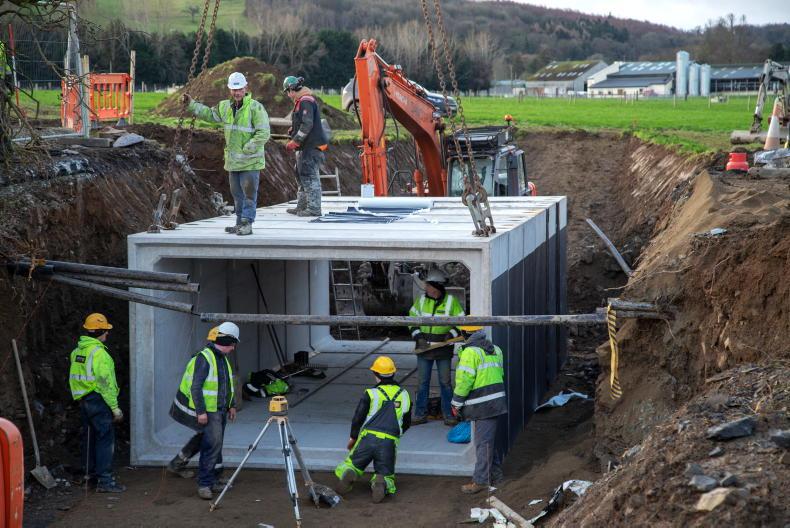

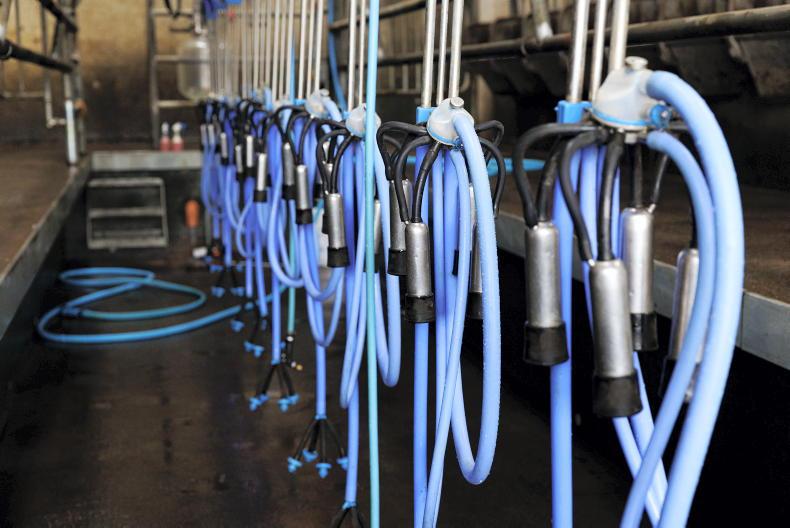
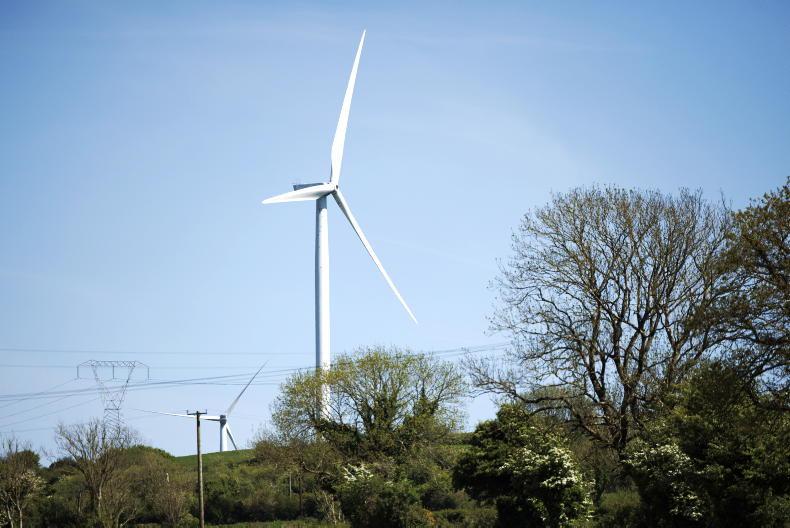
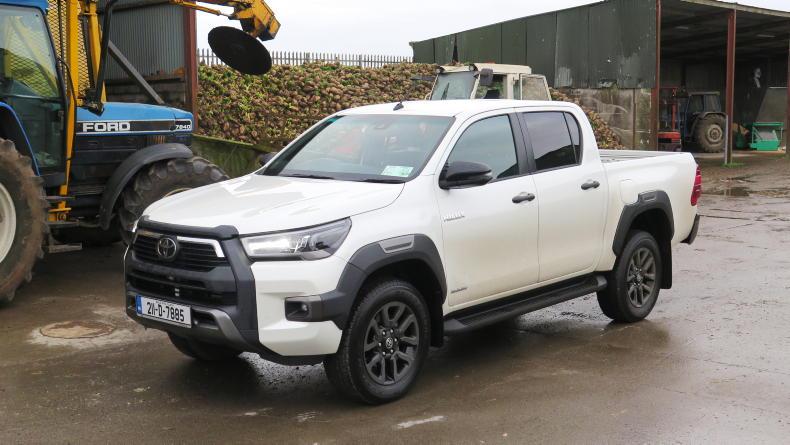
SHARING OPTIONS